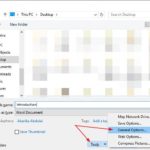11 Essential Computer Keyboard Tricks You Need to Know
Trick 1: If your computer contains sensitive information, simply hold the Windows key and press L, and your computer screen will instantly lock, preventing data snooping.
Trick 2: When searching for a document on your computer, instead of going through My Computer and clicking on the desired folder, computer experts use a simple shortcut: hold the Windows key and press E, and the data management window will instantly open.
Trick 3: If you’re playing a game or viewing sensitive content and your boss suddenly appears, don’t panic! Hold the Windows key and press D, and your desktop will immediately appear.
Trick 4: Here’s another handy trick: holding the Windows key and pressing Tab will help you switch between program windows.
Trick 5: To access the Windows screen recording function, press Windows+R, type “psr.exe”, and select OK. Now you can start recording your screen.
Trick 6: Want to know how to simultaneously adjust screen brightness, volume, connect to Wi-Fi, and check your laptop’s battery level? Or maybe you want to know what devices you need to connect your laptop to your TV? Simply press Windows+X, and your requests will be fulfilled.
Trick 7: Press Windows+R, type “osk”, and a virtual keyboard with functions similar to a physical keyboard will appear.
Trick 8: If an image or text is too small to see clearly, try holding the Windows key and pressing “+” or “-” to adjust the zoom.
Trick 9: When you have multiple programs open and want to switch between them, use Ctrl+Tab. To immediately close the current window, press Ctrl+W.
Trick 10: Hold the Windows key, press Fn, and then press Home. This will open the Properties window without having to use the mouse to click on My Computer, right-click, and select Properties.
Trick 11: Hold Shift and click on the taskbar icons.
Alt-Shift
Ctrl+S: Save
Ctrl+W: Close Window
Ctrl+N: Open New Folder
Ctrl+O: Open Previous Folder
Ctrl+Z: Undo
Ctrl+F: Find
Ctrl+X: Cut
Ctrl+C: Copy
Ctrl+V: Paste
Ctrl+A: Select All
Ctrl+[: Reduce Font Size
Ctrl+]: Increase Font Size
Ctrl+B: Bold Text
Ctrl+I: Italicize Text
Ctrl+U: Underline Text
Ctrl+Shift: Switch Input Language
Ctrl+Home: Go to Top of Page
Ctrl+End: Go to Bottom of Page
Ctrl+Esc: Open Start Menu
Ctrl+Shift+ < or Ctrl+Shift+>: Reduce or Increase Font Size
Ctrl+F5: Reload Website
Ctrl+ Drag Folder: Copy Folder
Ctrl+Backspace: Switch Keyboard Input
When dragging a folder, hold Ctrl+Shift: Create Shortcut for Folder
Alt+Backspace+C: Close Window
Alt+Backspace+N: Minimize Window
Alt+Backspace+R: Restore Window
Alt+Backspace+X: Maximize Window
Alt+Backspace+M: Move Window
Alt+Backspace+S: Resize Window
Alt+Tab: Switch Between Windows
Alt+F: Open File Menu
Alt+V: Open View Menu
Alt+E: Open Edit Menu
Alt+I: Open Insert Menu
Alt+O: Open Organize Menu
Alt+T: Open Tools Menu
Alt+A: Open Favorites Menu
Alt+W: Open Windows Menu
Alt+H: Open Help Menu
Alt+Enter: Check Text Properties
Alt+Double Click on Text: Check Text Properties
Shift+ Backspace: Switch Full Screen
Shift + Delete: Permanently delete selected items without sending them to the Recycle Bin.
Word Shortcut Keys
CTRL+O: Open Document
CTRL+P: Print
CTRL+A: Select All
CTRL+D: Font (select text first)
CTRL+G/H: Find/Replace
CTRL+N: New Document
CTRL+M : Left Indent (select text first)
CTRL+U: Underline (select text first)
CTRL+B: Bold (select text first)
CTRL+I: Italicize (select text first)
CTRL+Q: Align to Justify (select text first) or place cursor at end of paragraph and perform action.
CTRL+J: Center Align (as above)
CTRL+E: Center Align (as above)
CTRL+R: Right Align (as above)
CTRL+K: Insert Hyperlink
Reopen Closed Tabs
If you accidentally close a tab, simply press Ctrl + Shift + T to reopen the recently closed tab. On a Mac, press Cmd + Shift + T.
Snap and Multi-Monitor Windows Features
Pressing the Windows key + arrow keys will quickly snap windows to one side of the screen. Additionally, pressing Shift + Windows key + arrow keys will shift windows to another monitor. Pressing Windows key + P will also allow you to quickly set up a second monitor or projector.
On macOS, take advantage of Mission Control to manage virtual desktops, switch between apps, and achieve maximum efficiency. While Mac doesn’t support multi-window mode, an app called Magnet, priced at $0.99, performs this function and is highly rated.
Password Protect Your Files
An easy way to prevent others from accessing your important files is to encrypt them. You may already have 7-Zip, WinRAR, The Unarchiver (for Mac), or equivalent software. Create a new archive, choose to encrypt the contents, and password-protect it.

Undo Almost Anything
Did you know that you can undo almost any action on your computer? Ctrl + Z is a classic keyboard shortcut that you’re probably familiar with, but note that undo isn’t just for typing. If you accidentally delete or move a file, you can press Ctrl + Z to bring it back (Ctrl + Y will redo any action). This works on Mac, too.
YouTube Keyboard Shortcuts
You may know that the space bar pauses a YouTube video, but did you know that the K key does the same thing? Additionally, J and L keys rewind or fast-forward 10 seconds, and M mutes the audio.
Take Screenshots
Pressing Print Screen on your keyboard is the easiest way to take a screenshot. However, Windows and macOS offer other ways to capture your screen. You can use Monosnap (Mac, Windows), a simple, fast, and cross-platform tool.
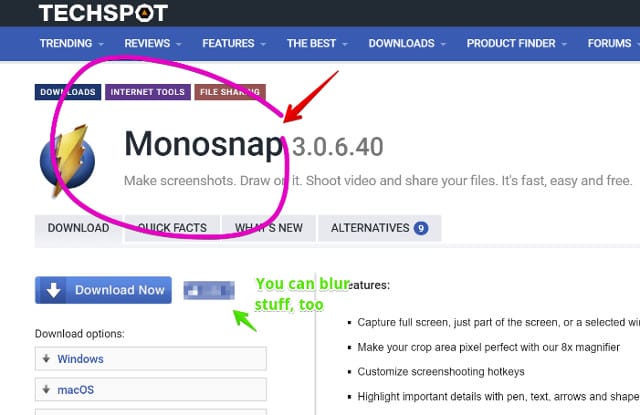
Windows Power User Menu
You can open the Windows Power User Menu by right-clicking on the bottom-left corner of the Start button in Windows 8 and 10, which opens a context menu with shortcuts to Power Options, Event Viewer, Device Manager, etc. This menu can also be accessed by pressing Windows + X.
Easily Extract Images from Word (.docx) Files
Change the file extension from .docx to .zip and open the file. The images will be located in one of these folders.
Find or Delete Large Files Taking Up Storage Space
A handy tool called Space Sniffer can be used to easily find the files and folders taking up the most space on your drive. From there, you can delete them and free up storage. Other free Windows options include WinDirStat and TreeSize. On macOS, you can use Finder or Siri to find large files without third-party apps.
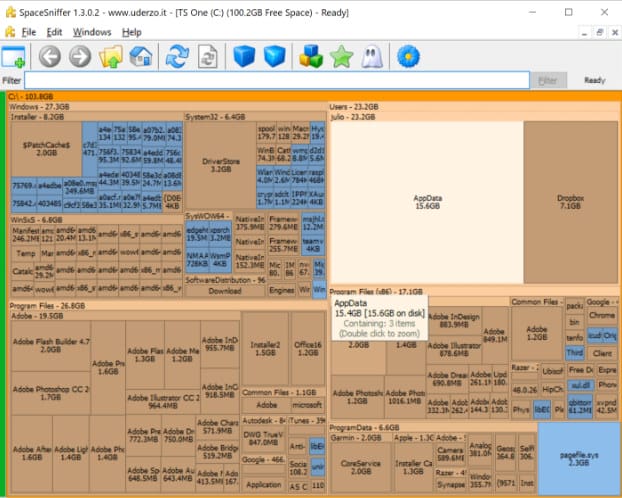
Reduce Programs Running at Startup
If your computer is slow to boot, it may be because too many programs are running at startup. It’s easy to reduce the number of these programs and speed up your boot time. However, be careful about which programs you disable at startup to avoid system crashes.
Windows: Open Task Manager (Ctrl + Shift + Esc) and go to the Startup tab to configure which programs you want to run with your system.
Windows 7 and earlier versions: Open Run (Windows key + R) and type msconfig to access a similar startup window.
macOS: Go to System Preferences > Users & Groups > select your user and click on the Login Items tab. You can remove or hide startup apps from here.
Windows Control Panel’s Hidden Folder
Windows provides a Control Panel that contains all the operating system’s settings, making it easy for users to tweak everything from desktop backgrounds to VPN settings. To access this mode, create a new folder with the exact name: God Mode.{ED7BA470-8E54-465E-825C-99712043E01C}. The folder icon will change to the Control Panel icon, and you can access and modify all sorts of settings.
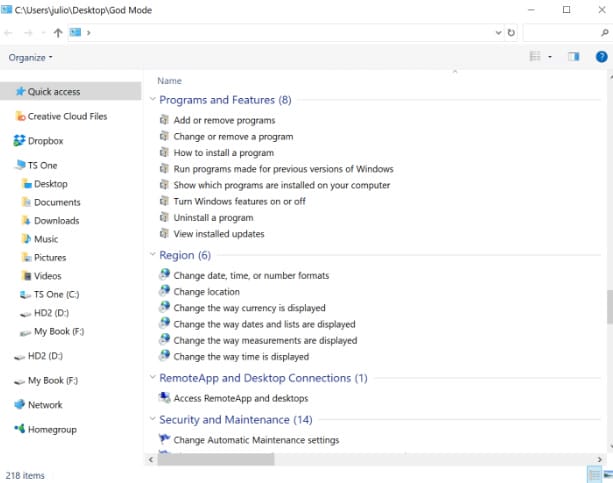
Text Manipulation Tricks
Paste Plain Text
When copying text from any source, it retains the original formatting. To paste unformatted text, press Ctrl + Shift + V instead of Ctrl + V, and your system will paste plain text. This also works on Mac: Cmd + Shift + V.
There are a few other options besides copying and pasting in Notepad:
1) Ctrl + Alt + V will display the “paste special” dialog.
2) Ctrl + Spacebar will remove formatting from pasted text.
3) Download Puretext and assign a hotkey to always paste plain text.
Delete Entire Words
Instead of deleting one character at a time, pressing Ctrl + Backspace will delete the entire word behind the cursor.
Move Cursor to Beginning of Next or Previous Word
Moving the cursor around manually while typing can be time-consuming. To speed things up, use keyboard shortcuts. To move the cursor to the beginning of the previous word, use Ctrl + left arrow. To move it to the end of the next word, use Ctrl + right arrow. On macOS, you can use the Option key. To select a word or a block of text, hold Shift + Ctrl + arrow keys (up or down will select the entire text block).
Create Superscript and Subscript
If you need to create superscript and subscript, press Ctrl + = for subscript and Ctrl + Shift + = for superscript.
Use Windows Character Map to Identify and Create Foreign Symbols
Find Character Map in the Start menu, and you’ll find a utility that lets you copy any character and even provides an Alt + keyboard code. For example, the euro currency symbol (€) can be done with Alt + 0128.
General Keyboard Shortcuts
Open Task Manager Directly
To open Task Manager directly, press Ctrl + Shift + Esc.
Use Spotlight
Windows’ built-in search function isn’t terrible, but it’s definitely not the most reliable or fastest. However, macOS’s Spotlight is a “smart” tool. Press Cmd + space bar to open an app by typing just 2 or 3 letters of its name, search for files, or even do calculations.
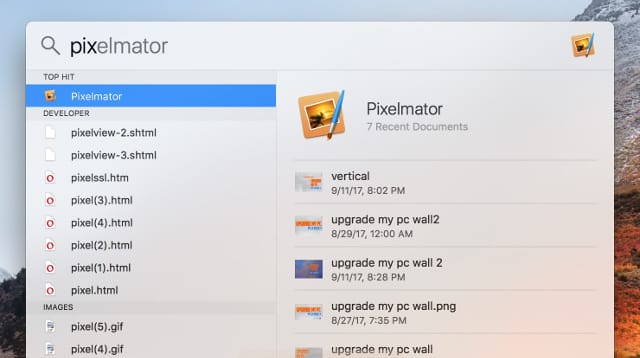
Interrupt All Processes
Ctrl + Alt + Delete is a common computer keyboard shortcut that almost every user is familiar with. Importantly, it can also be used to interrupt all processes, including those that are causing system issues. On macOS, you can also “force quit” apps using Cmd + Shift + Esc.
Switch Between Open Windows
Pressing Alt + Tab lets you move through open windows (Alt + Shift + Tab will move in the opposite direction). On macOS, use the keyboard shortcut Cmd + Tab.
Launch Programs with Hotkeys
Right-click on any app shortcut in Windows, click on Properties, and in the Shortcut tab, you’ll see a field for “shortcut key” where you can assign your preferred keyboard shortcut to launch the program. Note that if you click on “advanced” in the Shortcut tab, you can set it to run as an administrator, which is especially useful for creating a shortcut for an elevated Command Prompt.
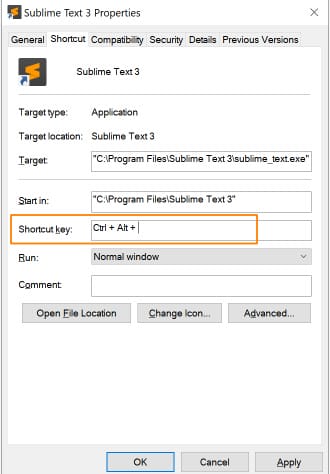
Close the Current Program
Pressing Alt + F4 will close the currently running programs. This is a handy time-saver.
Minimize All Windows
Sometimes, you may be using a series of programs and want to minimize all of them to view the desktop. Simply press Windows + D to save time on minimizing each window individually. Note that Windows + M provides a similar function but without the undo feature, so Windows + D is the more convenient approach. On macOS, use Mission Control to manage virtual desktops and switch between apps.
Use the Keyboard’s Menu Key to Right-Click



























